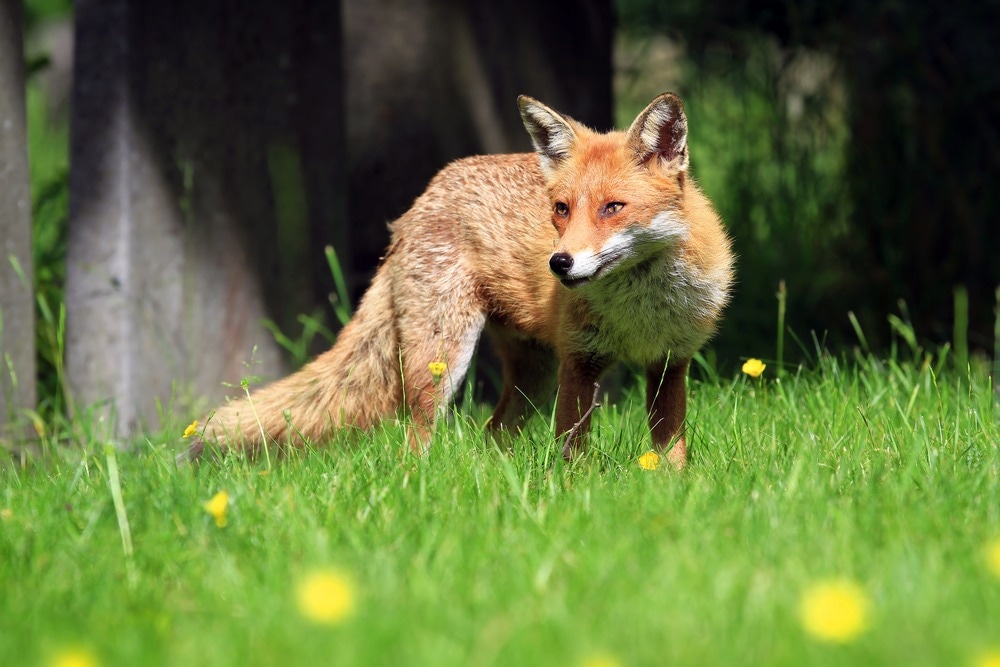 By Neha MathurReviewed by Danielle Ellis, B.Sc.Aug 18 2022
By Neha MathurReviewed by Danielle Ellis, B.Sc.Aug 18 2022In a recent study posted to the bioRxiv* preprint server, researchers investigated all the potential animal hosts and reservoirs of poxviruses, including the monkeypox virus (MPXV), to inform surveillance programs and mitigation procedures.
 Study: Monkeypox virus shows potential to infect a diverse range of native animal species across Europe, indicating high risk of becoming endemic in the region. Image Credit: Mark Caunt/Shutterstock
Study: Monkeypox virus shows potential to infect a diverse range of native animal species across Europe, indicating high risk of becoming endemic in the region. Image Credit: Mark Caunt/Shutterstock

 *Important notice: bioRxiv publishes preliminary scientific reports that are not peer-reviewed and, therefore, should not be regarded as conclusive, guide clinical practice/health-related behavior, or treated as established information.
*Important notice: bioRxiv publishes preliminary scientific reports that are not peer-reviewed and, therefore, should not be regarded as conclusive, guide clinical practice/health-related behavior, or treated as established information.
Background
Since the MPXV spread worldwide, the World Health Organization (WHO) declared it the seventh ‘Public Health Emergency of International Concern’ in July 2022. Preliminary mitigation strategies against MPXV, including vaccination, contact tracing, and voluntary isolation, have not been able to control its spread, and its incidence is still rising, even outside the endemic regions (e.g., Europe).
The animal host range is central to the epidemiology of all zoonotic viruses, including MPXV. It affects the risk of viral spillover into humans, their dissemination into new regions via the movement of infected hosts, the establishment of novel reservoirs, and their sustenance between outbreaks, which makes their eradication difficult.
Studies have found that three genera of African rodents, viz., Cricetomys, Graphiurus, and Funisciurus, are the natural reservoirs of MPXV. In the United States (US), these rodents first infected prairie dogs (Cynomys ludovicianus), which produced all human cases in the 2022 outbreak. Yet, the full and specific range of potential animal hosts and reservoirs of MPXV remains unknown, particularly concerning in new at-risk non-endemic areas, where local hosts could serve as reservoirs following spillback from humans to animals.
Compared to the 2003 MPXV outbreak, in the 2022 outbreak of MPXV, the virus persisted in non-endemic regions for a prolonged time and was far more geographically widespread. If animal species in non-endemic regions are susceptible to the MPXV, the current MPXV outbreak could become endemic in new regions, which is highly concerning.
In addition to MPXV, several other poxviruses, including cowpox, and bovine papular stomatitis viruses, are of human and animal health concern. For instance, many poxviruses have a single host species, while the cowpox virus has 70 known host species. Therefore, there is a need to understand the host range of MPXV and other poxviruses.
About the study
In the present study, researchers utilized light gradient boosting decision tree models (lightGBM), an ensemble of classifiers comprising many class balancing techniques and instance weights, to provide detailed predictions of susceptible hosts specifically for poxviruses. They also generated spatial distribution maps to show geographic areas (in high resolution) at high risk of poxvirus outbreaks.
The researchers examined data from genomes of 63 species depicting genomic features of poxviruses; phylogenetic, taxonomic, ecological, environmental, and geospatial traits of 1,489 mammalian and 995 avian species; and described the linkage of poxviruses with their observed and potential hosts. Additionally, they examined 24,445 mammalian and bird interactions to observe all the viral sharing amongst these species.
Study findings
The authors demonstrated a high probability of susceptibility to MPXV among several wild species across Europe, which aligns with the current outbreak epicenter. These findings also highlight the immediate spillback risk and potential endemicity of MPXV. The European red fox (Vulpes vulpes) and the brown rat (Rattus norvegicus) have established interactions with potentially contaminated urban waste and sewage, and that perhaps is how they could cause potential spillback of MPXV. These wild species have a high density in the southeast European region of Hungary/Romania and, to a lesser extent, in Ukraine/Belarus.
Also, the study results highlighted that other European rodents, including the herb field mouse (Apodemus uralensis), Alpine marmot (Marmota marmota), and the yellow-necked field mouse (Apodemus flavicollis), are also ideal long-term reservoir hosts of MPXV. Therefore, all these native European species should be top surveillance priorities.
In addition to the European host hotspots, the Sichuan and Gansu provinces of central China have a high density of predicted MPXV hosts. The current low MPXV prevalence in these regions might increase in the future with the lifting of ongoing severe acute respiratory syndrome coronavirus 2 (SARS-CoV-2) restrictions, and spillback risk may also increase there.
The study model showed a current underestimation of 2.4 to 4.3-fold for MPXV, 2.34 to 4.56-fold for mammalian poxviruses, and 1.96 to 4.02-fold for avian poxviruses. Specifically for MPXV, the study pipeline indicated a total of 222 mammalian species in which MPXV has been observed or could be found at a mean probability threshold of >0.5, with approx. 80% of the newly predicted hosts from the Rodentia and Primates orders.
For 50 mammalian poxviruses studied, most of the predicted susceptible hosts came from the orders: Rodentia, Primates, Artiodactyla, and Carnivora. Likewise, for 12 avian poxviruses, eight had a single observed host, and canarypox virus (CNPV) and fowlpox virus (FWPV) showed an increase in potential host ranges of 5.1- to 7-fold and 2.72- to 3.44-fold, respectively.
Conclusions
The study data, predictions, and geographic ranges will enable more focused surveillance, which will help public health officials estimate risk early and minimize the possible animal hosts from coming into contact with contaminated material. These efforts would help avoid the virus from becoming endemic in new regions or its complete containment.

 *Important notice: bioRxiv publishes preliminary scientific reports that are not peer-reviewed and, therefore, should not be regarded as conclusive, guide clinical practice/health-related behavior, or treated as established information.
*Important notice: bioRxiv publishes preliminary scientific reports that are not peer-reviewed and, therefore, should not be regarded as conclusive, guide clinical practice/health-related behavior, or treated as established information.